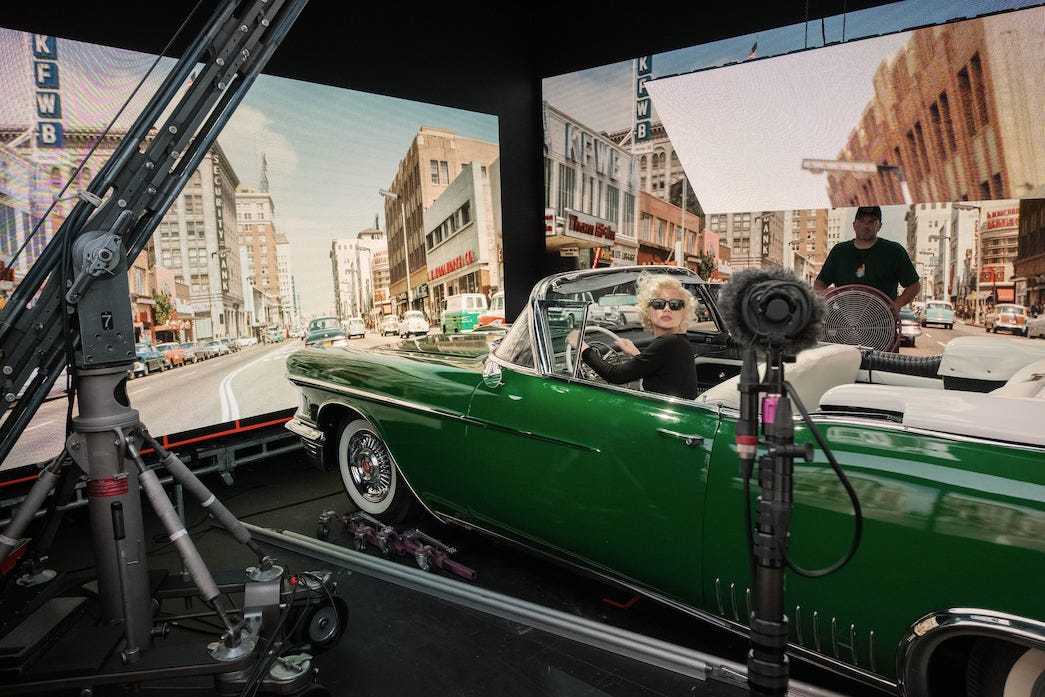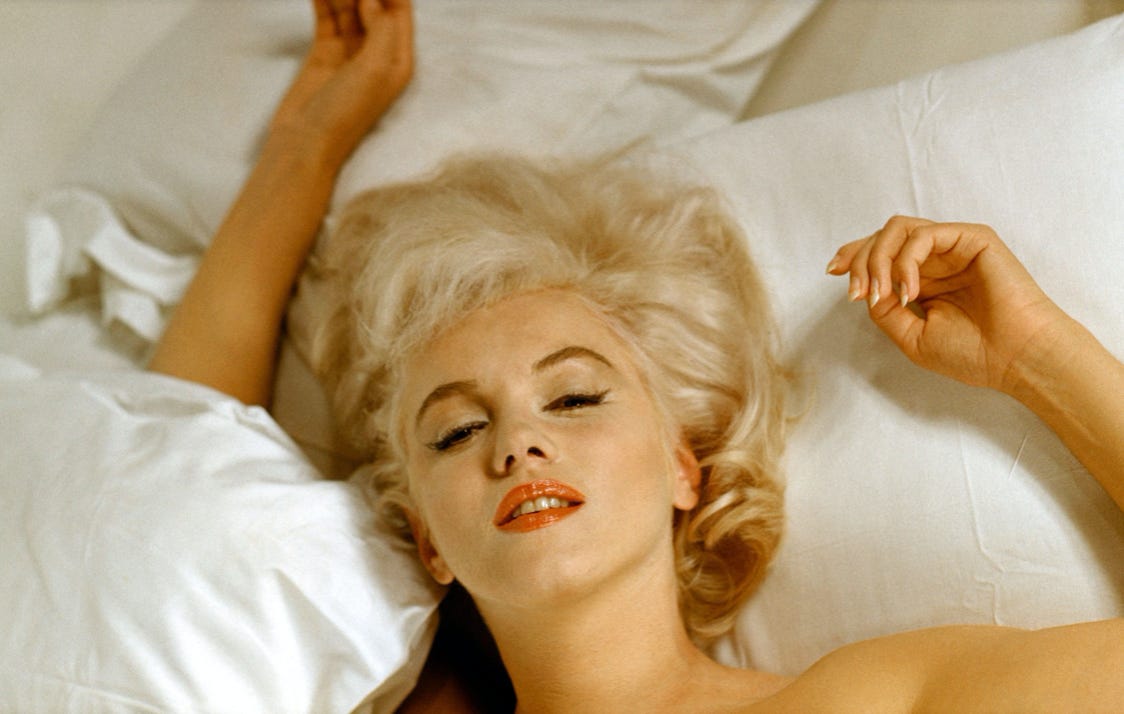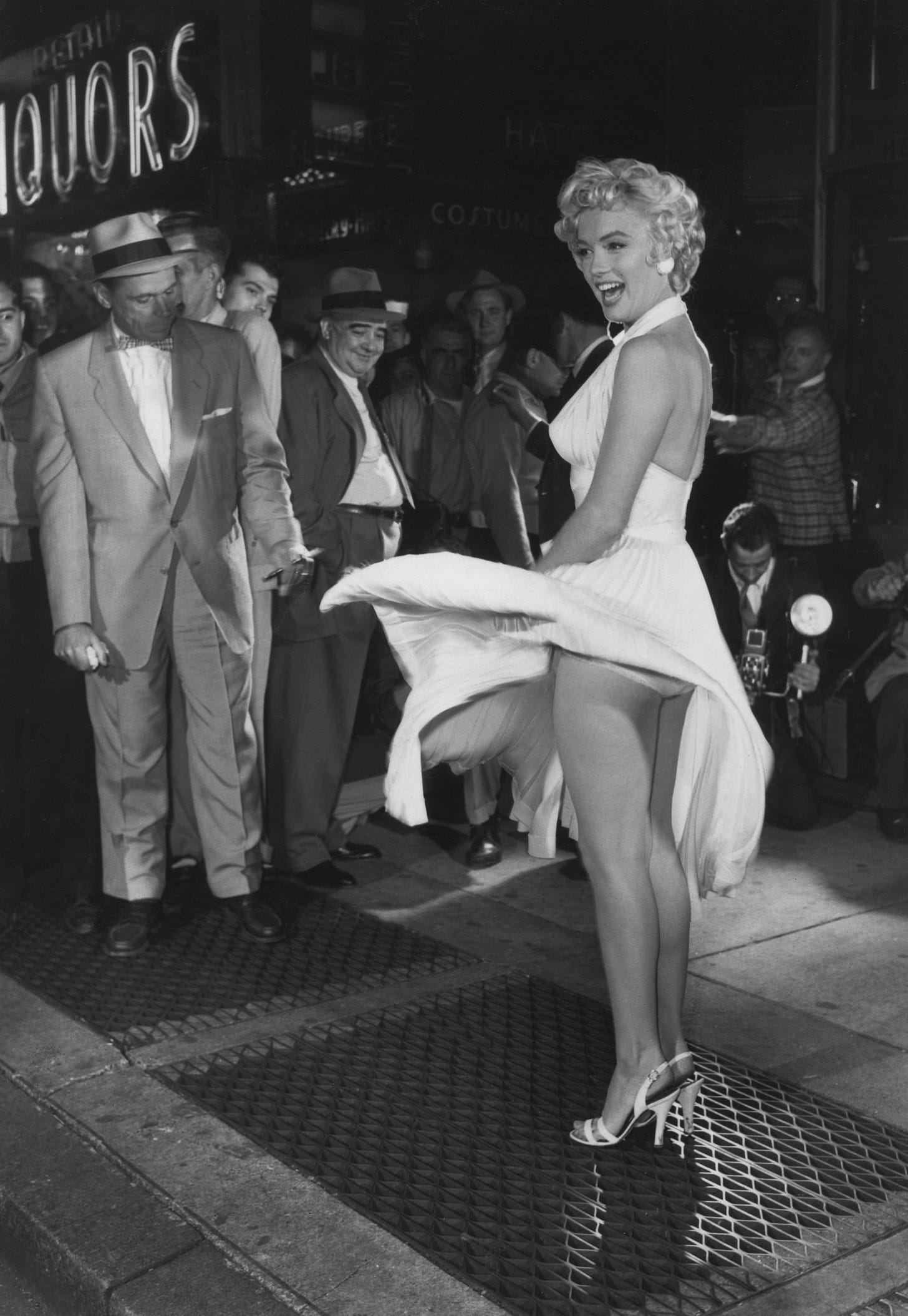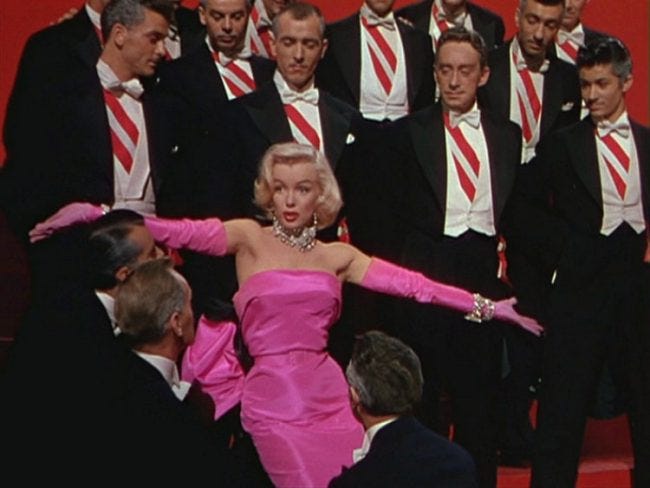What I’m watching:
There’s nothing like a bit of controversy to get people talking – just ask Kanye West – but when it comes to the Netflix movie Blonde, so much of the controversial commentary has come from people who haven’t actually watched it, yet. Certain accounts on TikTok are up in arms at the exploitation! The abuse! The anti-abortion message!
But then, once you’ve watched their actual video many of them will include a disclaimer; ‘not that I’ve seen it yet.’
It’s so, so easy to get tens of thousands of views for basically saying anything that comes into your head these days, and I really didn’t want to be put in that category. At the same time, did I actually want to watch Blonde? Hmm, kinda.
I absolutely wanted to watch it because Marilyn Monroe was Kim Kardashian before Kim tried to be Marilyn. She was the most famous woman in the world at one stage and her go-to beauty looks have stood the test of time, becoming what we view as the ultimate when it comes to glamorous beauty.
I didn’t want to watch the movie because it’s based on a fictionalised account of Marilyn’s life. So, director Andrew Dominik is giving his take on a highly imaginative novel written by author Joyce Carol Oates in 2000. It’s an interpretation of an interpretation. In fact the book Blonde has been described as a cross between a fairytale and a Gothic novel and was labelled as Oates’ most ambitious novel in 2020 by the New Yorker.
You have to remind yourself of this constantly when you see awful things happening on the screen, because you have no clue whose mind it came from and then you have to remind yourself that it’s not fact. Very little in the film is true, apart from some rumours and names of people who actually existed in Marilyn’s life, although not in the way that Dominik would have us believe.
I finally watched Blonde last night and while it’s not a film I would watch again – unless I need to reference it for this newsletter – there are plenty of things to enjoy. Before I go on, I should note that Joyce Carol Oates has shown strong support for Dominik’s vision, saying it’s a ‘brilliant work of cinematic art’ – which I wouldn’t disagree with, looking at it from a visual standpoint. Oates has also expressed her surprise, that in a post #MeToo era, people are coming for Dominik when he’s merely showing exactly how men in Hollywood have been behaving for decades.
Things I enjoyed about watching Blonde.
#1: The way the cinematography evolves with each phase of Marilyn’s life and the way the crew managed to recreate old school black and white film. There’s a scene that overlaps actual footage of Tony Curtis in Some Like It Hot with Ana De Armas, the Spanish Cuban actress playing Marilyn, seemingly in the same room, and it is literally seamless.
#2: Another scene that is stunning and hypnotic, is the iconic scene of Marilyn standing over a subway grate in a figure-hugging white cocktail dress for The Seven Year Itch. The scene starts in black and white and we see Marilyn letting the air from the grate move her pleated skirt up and down, over and over – it’s like the director wants us to zoom right in, to look up her skirt. At some point the focus is purely on the skirt undulating and it switches to colour. For me this scene might just be the epitome of what Dominik wants us to see; Marilyn as an object to be consumed and devoured. Does he really want us to feel for her and what she goes through? I don’t think so. But I also don’t think he is inherently evil for that. Perhaps he’s showing us who we truly are: a society that consumes social media for 8 hours (or more) a day, full of people who have a very short attention span that feel they can comment on a stranger’s image without even thinking how it might make them feel.
#3: I loved the Technicolor moments; as a photographer and cinema obsessive, I’ve always been amazed at just how stunning Technicolor would have been for viewers who had only just got used to seeing black and white moving imagery back in the day.
#4: I also loved how transfixed I was by Marilyn’s glow throughout the film. You can see the time and research that the hair and makeup team put into transforming De Armas into Marilyn. Tina Roesler Kerwin (who’s worked with Ana De Armas before on The Gray Man) was in charge of makeup and Jaime Leigh McIntosh led on hair.
Seeing the intense glow on De Armas’ skin, almost like she was wearing highlighter all over, underneath her foundation, I decided to do a tiny bit of research into Marilyn’s real life, long-term makeup artist, Allan ‘Whitey’ Snyder. He worked on Marilyn from 1946 for her first screen test until her funeral in 1962, applying her final coat of mascara, as per her personal request.
As well as being the man who came up with the concept of lip contouring, using a blend of up to five colours, Whitey helped Marilyn achieve the illusion of ‘youth’, which the actress believed was down to having thoroughly moisturised skin, using a ton of Vaseline beneath her makeup. He also used a lot of different coloured eyeliners on Marilyn’s eyes, all aimed at creating depth and making her eyes seem much wider – I share more of his vintage beauty secrets over on my TikTok, which you can see here.
If you want to know even more about the hair and makeup process for Blonde the movie, I highly recommend checking out Kirbie Johnson (one half of the Gloss Angeles podcast) over on TikTok. She shares that the all-over glow we see on Ana is down to one of my faves, Charlotte Tilbury’s Flawless Filter.
Things I wasn’t sure about…
#1: Ana De Armas truly, truly delivered an outstanding performance for Blonde but I personally kept tripping over her (beautiful) accent. Every now and then I couldn’t help but question why – but then I guess, the movie is an interpretation of an interpretation, like I already said, so an accent really shouldn’t matter. It’s Dominik’s vision, not mine.
#2: The talking foetus was kind of disturbing to me and had this judgemental vibe. I don’t want to spoil anything for you so I’ll leave it at that.
In closing, I don’t need to watch Blonde again because for almost three hours, I had a sense of foreboding, I couldn’t relax. It wasn’t a glossy biopic, dedicated to showing the glamour of Hollywood; instead it seemed more interested in provoking discomfort, outrage or even disgust.
Let me know if you’ve seen the movie and if you liked it, loved it or hated it.










